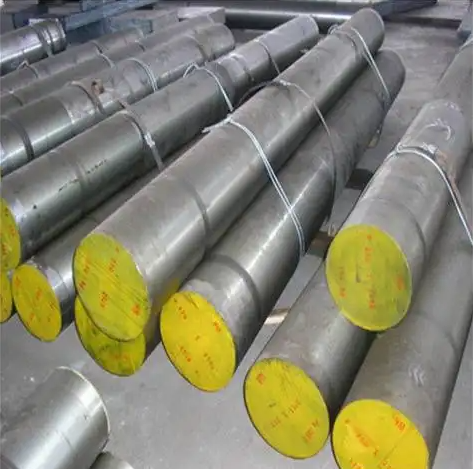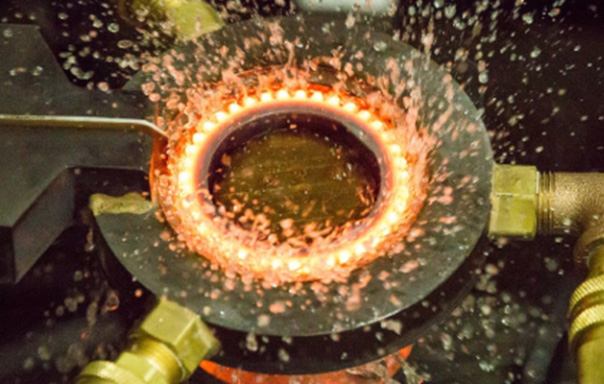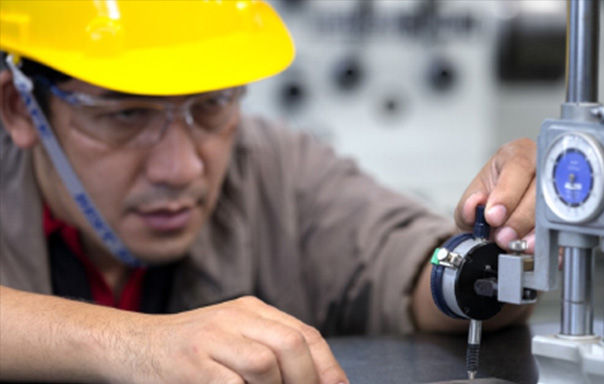ASTM A29 5140 alloy structural steel, a type of medium-carbon chromium-molybdenum alloy steel, is highly favored in the industrial sector due to its excellent balanced performance of high strength and toughness. Through precise chemical composition design and heat treatment process control, this material achieves an ideal combination of tensile strength and impact toughness, making it the preferred material for key mechanical components such as gears, shafts, and connecting rods. The following comprehensively analyzes how 5140 steel achieves the perfect balance of mechanical properties from aspects including material characteristics, heat treatment processes, industrial applications, and development prospects.
I. Chemical Composition and Basic Properties
The chemical composition of 5140 steel complies with the ASTM A29 standard, with its core components being 0.38%-0.43% carbon, 0.70%-0.90% chromium, 0.15%-0.25% molybdenum, supplemented by 0.75%-1.00% manganese and 0.15%-0.35% silicon. This proportion exerts a synergistic effect through solid solution strengthening and precipitation strengthening mechanisms: chromium improves hardenability, molybdenum refines grains and inhibits temper brittleness, while the carbon content is controlled at a medium level—this not only avoids the brittleness tendency of high-carbon steel but also ensures sufficient strength.
In the unheat-treated state, the Brinell hardness of 5140 steel is approximately 200-250 HB; after quenching and tempering (thermal refining), its hardness can reach 280-320 HB, tensile strength increases to 850-1000 MPa, and elongation still remains above 12%, demonstrating significant strengthening and toughening characteristics.
II. The Key Role of Heat Treatment Processes
The performance of 5140 steel is highly dependent on heat treatment processes, and the typical quenching and tempering process (quenching + high-temperature tempering) is the core method to balance its strength and toughness:
1.Quenching stage: Heat to 830-850°C for austenitization, then oil quench to obtain a martensitic structure. The hardness can reach above 50 HRC, but at this time, the material has high internal stress and poor plasticity;
2.Tempering stage: Temper at 540-660°C for 2-4 hours to decompose martensite into tempered sorbite, eliminate internal stress, and precipitate carbides. The selection of tempering temperature directly affects the final performance—lower temperatures (e.g., 540°C) prioritize high strength, while higher temperatures (e.g., 650°C) focus on toughness. A case study on automotive crankshaft manufacturing shows that 5140 steel tempered at 600°C has an impact energy of over 45 J, while maintaining a tensile strength of around 900 MPa.
In addition, surface hardening technologies (such as induction hardening) can further enhance wear resistance, increasing the surface hardness to 55-60 HRC, while the core still maintains good toughness—making it suitable for components requiring fatigue resistance, such as gears.
III. Analysis of Industrial Application Scenarios
The balanced mechanical properties of 5140 steel make it irreplaceable in multiple fields:
1.Automotive industry: Used in the manufacturing of engine crankshafts, transmission gears, and differential cross shafts. For example, the drive shaft of a heavy-duty truck adopts 5140 steel tempered parts, and its fatigue life is 3 times higher than that of ordinary carbon steel when subjected to alternating torque;
2.Construction machinery: Components such as excavator connecting rods and hydraulic cylinder piston rods need to resist both impact loads and wear. After carburizing treatment on the surface, the service life of 5140 steel is increased by 40%;
3.Oil equipment: In high-pressure and corrosive environments, the sulfide stress cracking resistance of 5140 steel (used in drill collars and valve assemblies) is superior to similar materials, reducing the failure probability to below 0.5%.
It is worth noting that in low-temperature environment applications (-40°C), by strictly controlling the phosphorus and sulfur content (≤0.025%), the Charpy V-notch impact toughness of 5140 steel can still be maintained above 30 J, meeting the manufacturing standards for polar equipment.
IV. Comparative Advantages and Technological Development
Compared with ordinary 45 steel or 40Cr steel, 5140 steel has a high-temperature strength increase of approximately 20% due to the addition of molybdenum, and it also has better toughness at the same strength level. In recent years, advancements in metallurgical technology have further optimized its performance:
1.Clean steel technology: Control the oxygen content below 15 ppm through vacuum degassing, significantly improving the fatigue limit;
2.Controlled rolling and controlled cooling process: Adopt staged cooling after direct rolling, reducing heat treatment energy consumption while ensuring uniform microstructure;
3.Composite treatment: Combine laser quenching with ion nitriding to make the surface hardness gradient gentler and extend the service life of components.
In the future, with the popularization of additive manufacturing technology, research on selective laser melting (SLM) forming of 5140 steel powder is advancing. This is expected to realize the integrated manufacturing of complex structural parts and further expand its application in aerospace precision components.
V. Recommendations for Material Selection and Processing
Attention should be paid to the following in practical use:
Weldability: The carbon equivalent of 5140 steel is approximately 0.6%. Preheating to 200-250°C is required before welding, and slow cooling and stress relief annealing should be performed after welding;
Machinability: For the tempered state, cemented carbide tools are recommended, and the cutting speed should be controlled at 80-120 m/min;
Alternative solutions: For scenarios requiring higher toughness, modified grades of 5140 can be considered, such as 5140H (narrow hardenability band control) or 5140M (microalloyed version).
In summary, ASTM A29 5140 alloy structural steel achieves a golden balance of high strength and toughness in industrial applications through precise control of composition and processes. With the introduction of new processes and in-depth interdisciplinary research, this classic material will continue to play a key role in the field of high-end equipment manufacturing.


Baoshan District,
Shanghai, China.



